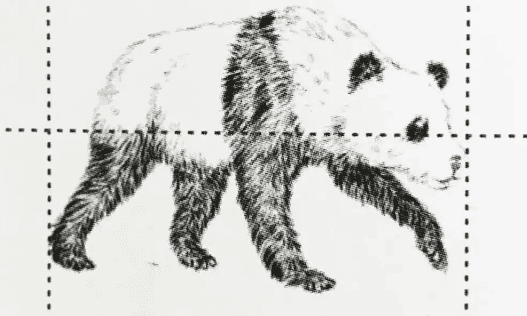Many people have doubts about who the natural enemies of giant pandas are.
Giant pandas’ innocent appearance gives people the impression of being docile and not fond of fighting.
Because its normal state is sauce style
Sauce style

Or sauce-style

However, it It is a veritable "King Kong Barbie". Although she looks cute on the outside, she contains plenty of fighting power inside her body.

You must know that giant pandas are carnivorous bears, not cats.
According to fossil research, starting from the late Miocene Eo panda:
Experienced
Eo panda - small species of giant panda - B. panda - giant panda Panda
Four Evolutionary Periods
The earliest panda fossil was discovered in Lufeng County, Yunnan Province.
The length of the premolars and molars of the fossil specimen is about 2/3 of that of the living panda, indicating that the EoPanda was smaller. According to the tooth morphology and structure of the fossil, the EoPanda has transitioned from carnivorous to carnivorous. Omnivore transformation.

From 1957 to 1964, the Chinese Academy of Sciences excavated the Nit Cave in Lenzhai Mountain, Liucheng, Guangxi 79 fossils of small species of giant panda were collected.
Research shows that the fossil is about 2.5 million years old, is 1/2 the size of the living panda, and has very similar tooth morphology and structure to the living giant panda.

The fossils of the giant panda are deposited in the caves of the Ruby mining area in Mogok City, Myanmar. After being discovered for the first time, fossils of giant pandas were later discovered in Wanxian, Sichuan and other places.
Based on fossil analysis, with the back-and-forth fluctuations of the glacial-interglacial climate, the size of the giant panda has further increased, and is about 1/9 larger than the living panda.
Living species of giant pandas usually refer to giant pandas that have entered the Holocene.
Currently, living pandas only live in more than 2.5 million hectares of high mountains and deep valleys in Sichuan, Shaanxi, and Gansu provinces, including six major mountain systems, including the Qinling Mountains, the Min Mountains, the Qionglai Mountains, and the Xiaoxiangling Mountains.
When a living adult giant panda crawls, its length from nose to buttocks can reach 150cm. When it stands, it is even taller. Its weight can even reach 180kg. Its bite force is only stronger than that of lions, tigers, brown bears and other animals. Weaker, fifth among all animals.
Coupled with its powerful jaws and claws, animals that attack giant pandas may not be able to defeat it.

Therefore, it can be said that in nature, adult giant pandas basically have no natural enemies. Although animals such as jackals, tigers and leopards will attack giant pandas, they mainly attack young giant pandas aged 1.5-2.5 years old and the elderly, weak, sick and disabled.

Although adult giant pandas have almost no natural enemies, they are affected by the ecological environment and their low reproductive capacity. , parasitic diseases and other factors, the giant panda is still an endangered animal, and there is still a long way to go to protect the giant panda.

 扫一扫微信交流
扫一扫微信交流
发布评论